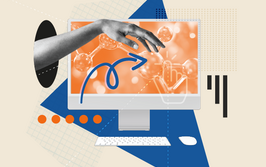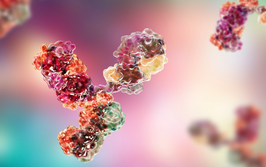Formulating the Future
A Spotlight Interview with... Kishor Wasan, Dean of the College of Pharmacy and Nutrition, University of Saskatchewan, Canada.

What made you choose a career in science?
I come from a family of academics – my mother was a physician, my father was a professor at Queen’s University in Ontario, and my uncle was a professor at the Illinois Institute of Technology – so perhaps it was inevitable! When I was a kid I used to hang out in their labs asking questions about why and how things happened. My dad told me I should be a scientist because I was so inquisitive, and I was certainly passionate about science fairs when I was in high school. I used to work in labs as a summer student, both at high school and when I was an undergraduate. So going into science was more the result of a gradual evolution rather than a single seminal moment.
And how did you become interested in drug delivery?
When I worked as a decentralized hospital pharmacist in the mideighties, supporting physicians and nurses in the wards, I noticed that many medications, particularly oncology drugs, were inefficient and prone to side effects. That started me thinking about drug delivery, and was a key factor in my decision to go to graduate school in the late eighties. I did my PhD at MD Anderson Cancer Centre, in Houston, with Dr Gabriel Lopez Berenstein, who was a world leader in parenteral lipid-based drug delivery. Specifically, I helped develop a liposomal form of the antifungal drug Amphotericin B. This work resulted in AmbiSome, a product which is still marketed today. After my PhD, I took a post-doctoral position at the Cleveland Clinic in Ohio in 1993; there, I was studying lipids and lipoproteins from a cardiovascular perspective. That’s where my own work, focusing on the interactions of drugs with lipoproteins, started to take off. In 1995, I was recruited to the University of British Columbia in Canada, where I spent the better part of 20 years, before moving here to Saskatchewan.
How has lipid technology sustained your interest throughout this time?
The lipid field continually changes – there is still a lot to learn about using lipid functionality to improve drug performance. And it’s very broad – there are different types of lipids, different pathways by which they are metabolized, and different functionalities. Even the term “lipid” covers many nuances and subsets. Also, as you get deeper into a specific field, you find that there are more questions than answers, so the longer I worked in lipid technology, the easier it was to stay. As I delved deeper into the subject, I shifted my focus, moving from lipid-based formulations for parenteral drug delivery to lipid-based formulations for oral drug delivery. But that in itself was a 30-year journey!
What key lipid research have you been involved with?
When I started at the University of British Columbia (UBC), I noticed that a lot of drugs, due to their intrinsic physicochemical properties, interacted with plasma lipoproteins, such as HDL and LDL, and these interactions actually influenced drug pharmacokinetics and pharmacology. So for my first 10 to 12 years at UBC, I focused on how lipoproteins affect drug disposition and behavior. This was important because many patients have lipid disturbances secondary to their disease, and these alterations in lipid profile modify drug behavior, resulting in less predictable clinical results compared with animal studies or healthy volunteer trials. I was one of very few people in the world working in this area, but my research resulted in the FDA recognizing the importance of lipoprotein drug interactions, and culminated in a paper (1), which summarized 25 years of lipid and lipoprotein work.
A second notable component of my research again involved Amphotericin B (I guess I’ll never get away from that drug!), but this time I developed an oral lipid-based formulation. This project came about through pure serendipity. Inthe late 1990s, an infectious disease doctor asked if I could develop an oral amphotericin formulation because it would be cheaper, more accessible and easier to administer than the parenteral formulation. This was a very ambitious objective, but I thought that it might be worth applying our evolving knowledge of lipid nutrition and digestion to this aim. Long story short, we successfully developed an oral formulation that was efficacious in systemic fungal infections, which in turn caught the eye of individuals at the Gates Foundation. They then approached me about developing an oral Amphotericin B form for the sandfly-vectored parasitic infection leishmaniasis. Amphotericin B was already the drug of choice for leishmaniasis, but wasn’t a realistic option for most people in the developing world, due to cost, poor access to hospitals and inadequate stability under the high temperatures and humidities associated with leishmaniasisendemic regions. We partnered with the Gates Foundation to make a low cost, oral, “tropically-stable” formulation of Amphotericin B. We have now licensed the product to a Vancouver biotech, iCo Therapeutics, which is about to take the product into Phase 1. This project led to the establishment of the Neglected Global Diseases Initiative at UBC, which I started with Bob Hancock back in 2009.
What are you working on at the moment?
In 2014, I became Dean of the College of Pharmacy and Nutrition at the University of Saskatchewan. This is a great opportunity to continue my work on novel lipid formulations, including topical formulations and gel capsule work with partners such as Catalent. That is where I am at present, and getting here has been very rewarding and a lot of fun!
- KM Wasan et al., “Impact of lipoproteins on the biological activity and disposition of hydrophobic drugs: implications for drug discovery”, Nat Rev Drug Discov, 7, 84-99 (2008). PMID: 18079757



















